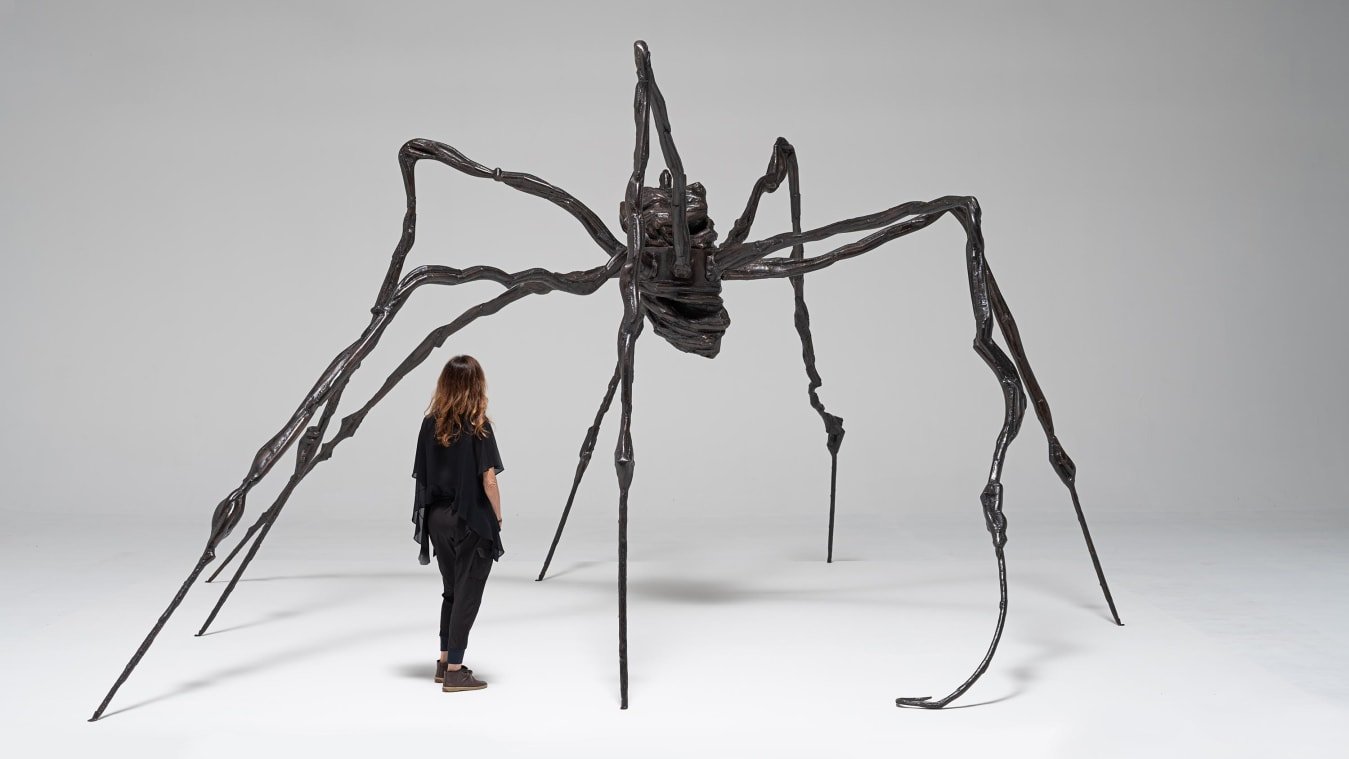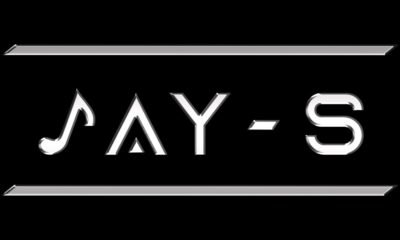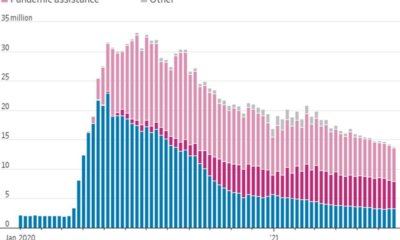Lifestyle
A fascinating look at optimal leisure lifestyle

An optimal leisure lifestyle (OLL) consists of deeply fulfilling participation during free time in one or more substantial, absorbing activities known as serious leisure. They are complemented by judicious amounts of casual leisure or project-based leisure or both. People find an OLL by doing leisure activities that individually and in combination help them realise their human potential (their talents and tastes), leading thereby to an enhanced quality of life and well-being. Nevertheless, the OLL is basically a leisure conception, though one that always has work and non-work obligations in the background as a comparative backdrop.
In addition, the OLL is a contextual phenomenon, where a person’s diverse work, leisure, and obligatory non-work activities are coordinated along, among others, the dimensions of time, money, and available resources. Though it is individual people who experience this lifestyle, it is inevitably embedded in several wider contexts influenced as it is by certain organisations, groups, networks, social arrangements and cultural patterns. Some of the latter may also have deep roots in history.
Moreover, such structural and cultural phenomena can, depending on circumstances, constrain or facilitate the pursuit of these activities. A key issue for many people is finding an agreeable lifestyle, a highly personal goal to be sure. Nevertheless, the quest for this state entails in the most general sense finding the most acceptable balance possible among the component activities that comprise an OLL. Yet, for all this talk about large-scale context, the effort and perseverance needed to find it stand out as critical micro-processes here. The idea of the OLL really does span all contextual levels.
What does lifestyle balance mean, when applied to everyday living? In common sense it seems to refer to “spending more time with family,” or more broadly, having more leisure time as in “getting a life,” gaining some measure of freedom from unpleasant obligations expressed as escaping the “rat race,” and other adaptive strategies. In the leisure sciences, however, the answer to this question is much subtler: people typically find balance in the domains of work, leisure, and non-work obligation by crafting a lifestyle that encompasses these three and is thereby endowed with a substantial appeal of its own.
Everyone who is working has some kind of lifestyle bridging these domains. But it is also true that many people have activities in their lifestyles they would sooner be free of. How, then, to generate an appealing, balanced lifestyle spanning the three domains? Achieving this leads to Aristotle’s idea of the “good life,” often reached when people abandon certain irritations in their present lifestyle.
In broadest terms, finding an appealing leisure lifestyle hinges on discretionary time commitment. More particularly, it hinges, in part, on committing more hours to the activities one likes most, while subtracting hours from those one likes less or flatly dislikes. Understandably, this kind of balancing is easiest to accomplish in the domain of leisure, where by definition people stay away from unappealing activities.
Even here, however, some activities are more difficult than others to abandon on a whim. So the young male can, at the last moment, tell his friends that the weekend “pub crawl” no longer excites him and that, from thereon, they may continue their escapades without him. But the actress, having grown tired of community theatre as performed in her city, can only comfortably announce that next season, she will be unavailable for roles. She cannot, without great social cost, quit midway through preparation for an upcoming play because of her role in it, for to do so would leave many associates in a lurch and spoil immensely their serious leisure. In these examples, such meso-level ties to other sets of people act to constrain the individual’s behaviour.
So, an appealing, balanced lifestyle may be reached, in part, by tinkering with one’s pattern of leisure activities, spending more time in some while cutting back time spent in others. But, if someone caught in a poorly balanced lifestyle has little free time, then a solution to this problem must be found by redeploying commitments in the other two domains. In one sense, anyway, decisions about which activities to commit less time to in these areas of life are more subtle and difficult than in the domain of leisure. The first two domains are loaded with obligations that may, at least at first glance, appear absolutely fixed – the constraints of the meso and macro contexts loom large at this point.
Thus, people enjoying an optimal leisure lifestyle are usually conscious of other appealing casual, serious, and project-based leisure activities, but nonetheless sufficiently satisfied with their present set to resist abandoning them or adding others. Still, this might well change in the future, as an activity loses its appeal, Homo Otiosus (leisure man) loses his ability to engage in it, or new activities gain priority. From what I have observed in my own research, people with OLLs seem to sense that, at a given point in time, if they try to do too much, they will force a hectic routine on themselves, risk diluting their leisure, and thereby become unable to participate as fully as they would like in what they are passionate about.
Leisure education plays an outsized role here. Lacking instruction or reading on the nature and types of serious, casual, and project-based leisure, most people are unlikely to find the information they need to choose the activities that could make up their OLL. Fortunately, formal instruction in this area is increasingly common, much of it being offered these days through lifestyle courses in continuing education programmes or private counselling agencies, while various books now cover in detail this route to the world of leisure. As Henry David Thoreau put it: “The laboring man has not leisure for a true integrity day by day.”

Lifestyle
Towering Louise Bourgeois ‘Spider’ sculpture could fetch $40M at auction

deep-pocketed collector with room to spare could snare one of the most famous contemporary sculptures in her or his web next month, when Louise Bourgeois’ famed “Spider” hits the auction block at Sotheby’s in New York.
The work, over 10 feet tall and more than 18 feet across, is expected to bring in between $30 million and $40 million — meaning it is very likely to break at least one auction record, if not several.
If the work achieves at its low estimate, once Sotheby’s fees are accounted for, it would likely become the artist’s most expensive work at auction and the most expensive sculpture by a female artist ever sold at auction, surpassing another Bourgeois “Spider” that sold for $28 million ($32.1 million with fees) at Christie’s in May 2019. If it sells at or above its high estimate, the present “Spider” could come within web-slinging distance of the record for any work by a female artist at auction, currently the $44.4 million (with fees) that Walmart heiress Alice Walton’s Crystal Bridges Museum in Bentonville, Arkansas paid for Georgia O’Keeffe’s painting “Jimson Weed” in 2014.
“Spider” is being offered by Fundação Itaú, the nonprofit arm of Brazilian bank Itaú Unibanco. The sculpture was acquired by Olavo Setubal, an art collector and co-founder of the bank, after it was featured as the centerpiece of a special presentation of works by Bourgeois at the 1996 São Paulo Biennial, for which the French-American artist also designed a distinctive, spiraling logo. The sculpture was on loan to the São Paulo Museum of Modern Art from 1997 to 2017, and was subsequently displayed at various Brazilian institutions.
In the years since “Spider’s” acquisition, Fundação Itaú has shifted its collecting priorities to focus on works by artists based in Brazil. Proceeds from the sculpture’s sale will support those efforts.
Works from Bourgeois’ “Spiders” series are on prominent display at many of the world’s leading museums, including the Guggenheim Museum in Bilbao, the National Gallery of Canada in Ottawa, Dia Beacon in New York and Tate Modern in London.
Lifestyle
Celebrity hairstylist Kieron Justin takes the fashion and beauty world by storm

From London to Los Angeles, via New York, Milan and Paris, Kieron is not only a globetrotter, but is also known for his exceptional talent and his work as a world-renowned concept shoot stylist. It is highly sought after by some of the biggest names. in entertainment, fashion, music and advertising for his outstanding experience.
Kieron is among the most exciting talents in fashion, entertainment and music and is already being recognized as a highly respected young star, taking the industry by storm as one of the top hair artists to watch as he makes his mark on the industry. Kieron’s creative eye takes traditional shapes and styles and gives them a modern twist, challenging the perception of beauty and creating innovative looks and finishes that are unique and create character and nuance the way hair is worn. Kieron draws inspiration from fashion, travel, life, nature, religion, youth/subcultures, culture, textures, times, and history.
He regularly collaborates with some of the most established and globally respected photographers in the industry. His work has been featured in publications such as Vogue, Arena Homme +, lampoon, GRAZIA carnelle rooms, Elle, Harper Bazaar, Hunger, Schon! , Pusspuss, L’Officiel, Gaytimes, Iconic Artists, Wonderland and Rollercoaster to name a few
Kieron’s work has also extended to runway shows and haute couture sessions with brands such as Louis Vuitton, Gucci, Miu Miu, Loewe, Valentino, Versace, Missoni, Givenchy.
Prada, Dior, Burberry, Chanel, Saint Laurent, Balenciaga, Fendi, Fendace, Dolce & Gabbana, Bottega Veneta, Alexander McQueen, Moschino, Salvatore Ferragamo, Stella McCartney, Victoria Beckham, Coach, Schiaparelli, Raf Simons, Proenza Schouler, Sacai, Chloe, Ports, R13, Marc Jacobs, Christopher Kane, LDSS,
Kieron is currently heading up the creative direction for one of the largest operators of hair and beauty salons as the Creative Director for hair & beauty brand UK hairdressers and is also Brand Ambassador and a key creative artist, working with brands such as Color wow , Wella professionals, L’Oréal, Dyson, Oribe, Babyliss, ghd, living proof and many more top professional hair care & Beauty brands
Kieron has Impeccable attention to detail, Is Passionate and talented paired with an enviable creative vision and a wealth of experience and Strong expertise. Also known for not only doing hair but his contributing to the creative process and producing/heading up the art direction by Conceptualising ideas for brands to create luxury content, deliverables and images, drive brand strategy and initiatives whilst being highly client-focused, offering clients a beginning-to-end service from project inception to full-scale execution and delivery. This
has made Kieron one of the most in-demand session and Hair artists of today. Kieron’s goal is to continue growing in his industry to stand out from everyone and become a much better professional than he is today, in addition to continuing to grow in the sense of collaborating with many more brands than he has collaborated to date. which are first level brands.He feels very proud when looking back on the process he went through to get to where he is today and he knows that this is thanks to all the effort he put in to grow and be what he is today.
Lifestyle
Ontario Health Coalition Province-Wide Community Referendum to Stop Ford Government’s Privatization of Our Public Hospitals

The Health Coalitions across Ontario launched a major fightback to stop the privatization of our public hospitals today. The Coalition is mounting a community-run referendum. Health Coalitions are organizing voting stations outside grocery stores, local corner stores, coffee shops, at legions and community centres and in every busy part of our communities possible.
Ontario residents who are 16 years or older will be able to cast a ballot on the question:
“Do you want our public hospital services to be privatized to for-profit hospitals and clinics?” Yes or No.
The referendum voting days will be taking place on Friday May 26th and Saturday May 27th. More than a thousand voting stations will be open across Ontario. During the month of May, online voting will be available on the main website PublicHospitalVote.ca and workplace votes will take place.
The Ford government has now announced it is moving forward with plans to “significantly” [their words] expand privatization of surgeries and diagnostics and private hospitals and clinics to for-profit clinics and hospitals. They have brought in new legislation to facilitate this plan. They have used their majority to vote down all recommended amendments to the legislation, and Bill 60, which is in Third Reading debate in the Legislature, is expected to pass this week. They will use their majority to pass the bill, even though Ontarians have never had any say over this plan to privatize our hospitals.
In fact, the Ford government said that they would NOT do this in the lead in to the election, then two months after the election, they announced they were moving forward with the privatization of our core public hospitals’ services.
The government has already called for bids for three new private day hospitals to do 14,000 cataract surgeries initially as well as diagnostics.
They have given repeated boosts of tens of millions in new funding to expand existing private clinics to cover care for “thousands of patients”.
They are expanding the number of private clinics and intend to further expand the volumes as well as to expand the types of surgeries they privatize. They plan to have private hip and knee surgeries up and running by 2024.
At the same time the government has underspent the health care budget and the COVID budget every year by billions of dollars. The most recent figures show that while we are underspending on health care by $1.25 billion, the Ontario government has increased funding massively for the private for-profit clinics and hospitals. It is a big transfer of money from our public health care services to for-profits.
Practically every public hospital in Ontario has operating rooms that shut down at 4 p.m. and on weekends, or are closed for weeks or even permanently, due to lack of funding and staffing. We do not need new operating rooms — only now they would be owned by for-profit companies. We need our government to support our local public hospitals which have the lowest funding in Canada.
Our assessment is that this is very serious and extremely urgent. The premier told media that 50% of the surgeries currently done in hospitals are “easy” [and thus could be transferred out of public hospitals]. Surgeries, MRIs and CTs are core public hospital services.
This is not an add on, it is the privatization of our core public hospital services. The loss of these surgeries – and the staff and funding that go with them — would be devastating to all local public hospitals and would gut the services that remain in many of the medium and small hospitals.
While paying lip service to the idea that Ontarians will “pay with their OHIP card not their credit card”, in Bill 60, the Ford government expressly allows the for-profit clinics to sell an increasing array of medically unnecessary add-ons to needed surgeries and diagnostics. The Canada Health Act, which bans user fees and extra charges for patients for access to physicians, surgeries and diagnostic tests, is being ignored by the government. Patients are increasingly reporting exorbitant charges for their needed health care including access to doctors, tests and surgeries — things for which no patient in Canada should ever be charged. There is little question that the Premier is playing both sides, claiming you will always “pay with your OHIP card” and expanding two-tier charges for patients as it privatizes a whole array of services.
-

 Business3 years ago
Business3 years agoHyundai Leads Industry in U.S. News & World Report 2023 Best Cars for the Money Awards
-

 Innovation3 years ago
Innovation3 years agoJay-S ventures into the urban genre with “Bailar en la Playa” his latest production
-

 Business3 years ago
Business3 years agoThree Questions Small Business Owners Should Ask In Creating A Workplace Culture – Forbes
-

 Business3 years ago
Business3 years agoA Fintech Makes It Easy For Small Businesses To Offer 401(k) Retirement Benefits – Forbes
-

 Business3 years ago
Business3 years agoBritain’s Small Businesses See Better Times Ahead But Is Their Optimism Justified? – Forbes
-

 Money3 years ago
Money3 years agoCharlie Crist leads Democratic gubernatorial field again in money chase – Florida Politics
-

 Money3 years ago
Money3 years agoTesting New Tools for Horizon Worlds Creators To Earn Money
-

 Business3 years ago
Business3 years agoSmall Business Labor Shortage – Forbes